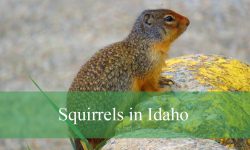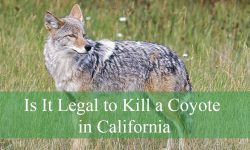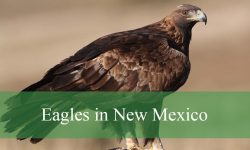Minnesota’s natural landscapes, from open grasslands to northern forests, provide ideal habitats for several species of wild rabbits. These small mammals, with their soft fur and quick movements, play an important ecological role in maintaining the balance of local ecosystems. Observing wild rabbits in Minnesota is a rewarding experience for wildlife enthusiasts and casual hikers alike.
While Minnesota doesn’t host many rabbit species, the few that thrive here are highly adapted to the region’s varied climates. Each has distinct physical characteristics, behaviors, and habitat preferences that make them easy to identify once you know what to look for. This guide will help you identify and understand the three types of wild rabbits in Minnesota, with details about their size, range, and lifestyle.
Let’s take a closer look at the fascinating wild rabbits that inhabit Minnesota’s fields, forests, and meadows.
Eastern Cottontail (Sylvilagus floridanus)
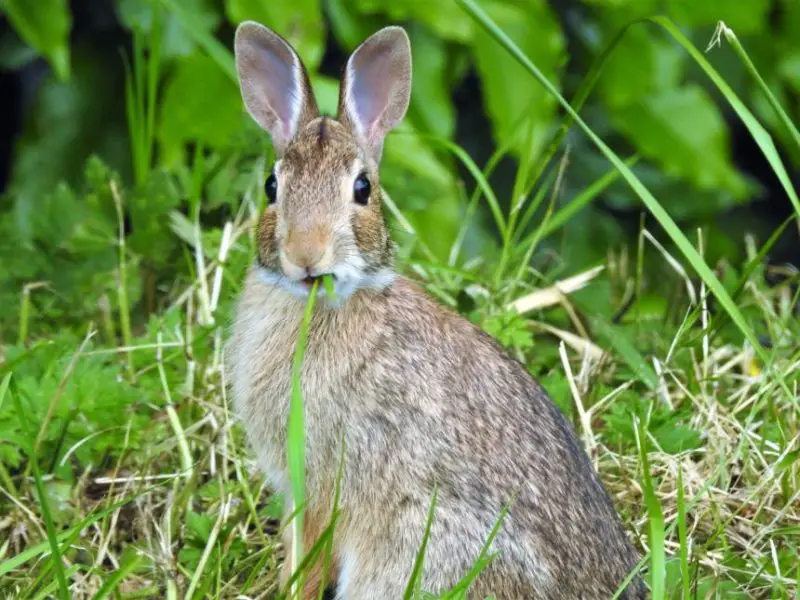
Identification and Appearance
The Eastern Cottontail is the most widespread and familiar rabbit species in Minnesota. It has a soft brown coat with a mix of gray and reddish hues, providing excellent camouflage among grasses and brush. Its white, cotton-like tail gives the species its common name. Adults usually measure between 14 and 19 inches in length and weigh from 2 to 4 pounds. Their large dark eyes and upright ears help detect predators, while their powerful hind legs allow them to leap quickly to safety.
The fur color can vary slightly depending on the season. In summer, the coat appears lighter and more reddish, while in winter, it turns grayer to blend with dormant vegetation. Juvenile cottontails are smaller with softer, more muted fur tones and are often seen during warm months.
Habitat and Range
In Minnesota, Eastern Cottontails are most abundant in southern and central parts of the state. They prefer areas where open fields meet wooded edges, providing both food and cover. You can often find them near farms, suburban neighborhoods, and along roadsides. They thrive in grassy areas where they can graze on vegetation and quickly retreat to dense shrubs or burrows when threatened.
This species adapts well to human-altered environments, often making its home in backyards and gardens. However, they are most active at dawn and dusk, when they venture out to feed while minimizing exposure to predators like hawks and foxes.
Behavior and Diet
Eastern Cottontails are solitary and territorial animals, using scent marking to establish boundaries. Their diet mainly consists of grasses, clover, dandelions, and other herbaceous plants in summer. During winter, they switch to bark, twigs, and buds from shrubs and trees. They are known for their habit of re-ingesting soft fecal pellets (cecotropes) to maximize nutrient absorption, a common trait among rabbits.
Cottontails breed prolifically, with females capable of producing several litters per year. Each litter typically contains 4 to 7 young, called kits. These offspring grow rapidly and are often independent within a month. This high reproductive rate helps maintain their populations despite predation pressures.
Snowshoe Hare (Lepus americanus)
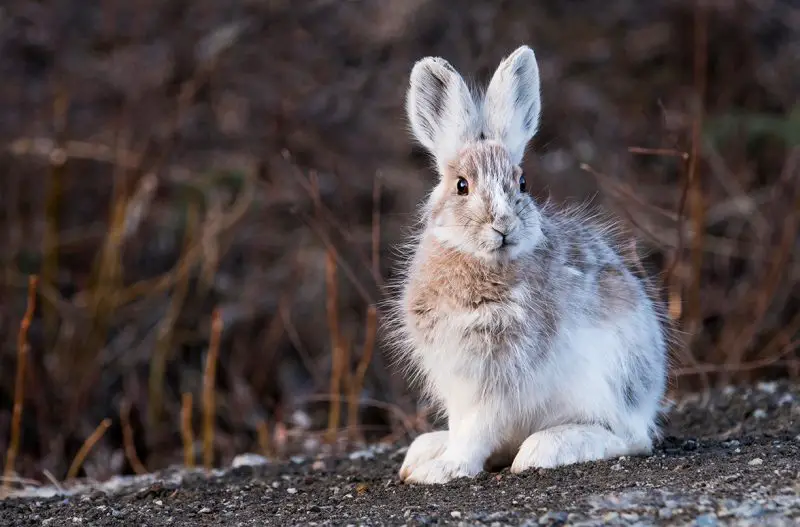
Identification and Appearance
The Snowshoe Hare is one of Minnesota’s most distinctive wild rabbits, known for its remarkable seasonal camouflage. In summer, it sports a brown coat, but in winter, it molts into pure white fur to blend seamlessly with snow-covered landscapes. The transformation not only helps it avoid predators but also showcases nature’s incredible adaptability. Its large hind feet, resembling snowshoes, allow it to move efficiently across snow without sinking — hence the name.
Adult Snowshoe Hares are slightly larger than cottontails, averaging 16 to 20 inches in length and weighing 3 to 4 pounds. Their ears are shorter than those of jackrabbits but still sensitive to sound. Their eyes are set wide apart, giving them a broad field of vision to detect danger from multiple directions.
Habitat and Range
Snowshoe Hares are mainly found in northern Minnesota, particularly in forested regions such as the Boundary Waters Canoe Area and Chippewa National Forest. They favor dense coniferous or mixed forests with thick underbrush, which provide both food and shelter from predators. Their populations fluctuate in cycles of about 10 years, influenced by food availability and predator dynamics, particularly with lynx and fox populations.
During the warmer months, they are most active during twilight hours, while in winter, they move more during the day to feed when light is available. They use well-worn trails through underbrush and create shallow depressions, called “forms,” for resting and hiding.
Behavior and Diet
Snowshoe Hares are shy and elusive creatures. They rely on stillness and camouflage more than speed to avoid detection. Their diet changes seasonally — in summer, they consume green vegetation, ferns, and leaves; in winter, they eat bark, buds, and twigs of willow, birch, and aspen. They also consume their cecotropes to extract additional nutrients.
Breeding begins in early spring, and females can have multiple litters each year, each containing 3 to 5 leverets. The young are born fully furred and with open eyes, ready to fend for themselves within a few days. Snowshoe Hares are an important food source for predators like lynx, owls, and hawks, playing a vital role in the forest food web.
White-tailed Jackrabbit (Lepus townsendii)
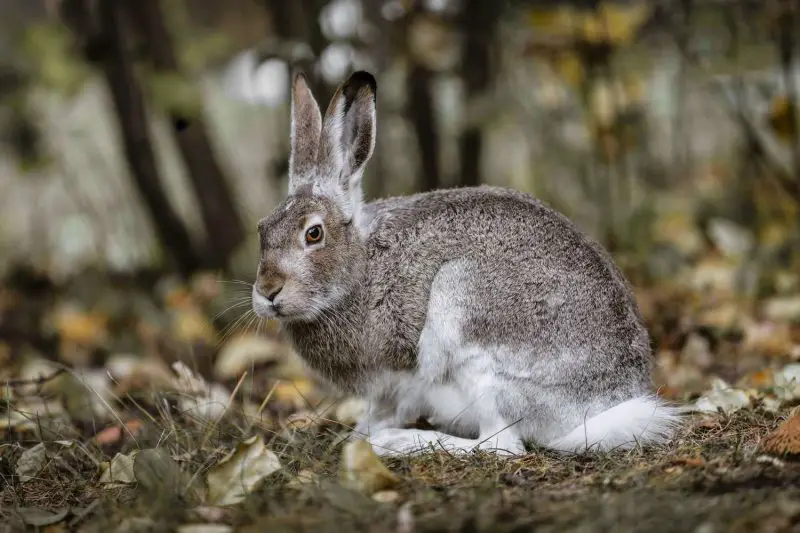
Identification and Appearance
The White-tailed Jackrabbit, also known as the Prairie Hare, is Minnesota’s largest wild rabbit species. Unlike the smaller cottontails, jackrabbits belong to the genus Lepus, meaning they are technically hares. Adults can reach 22 inches in length and weigh up to 7 pounds. They have long legs and exceptionally large ears, which help dissipate heat and detect predators from afar. The fur color changes seasonally — brownish-gray in summer and nearly white in winter — allowing them to blend with open prairie landscapes year-round.
The most distinguishing feature is the white underside of their tails, which becomes visible when they run, giving them their common name. Their powerful hind legs allow them to reach speeds of up to 40 mph, making them among the fastest small mammals in Minnesota.
Habitat and Range
White-tailed Jackrabbits prefer open grasslands, prairies, and agricultural fields in western and southwestern Minnesota. Historically, they were common across the state’s prairie regions, but habitat loss due to farming and urban expansion has reduced their numbers significantly. They are still occasionally spotted in open fields during early morning or twilight hours.
These hares are well adapted to Minnesota’s cold winters and can survive in areas with minimal cover, relying on their speed and keen eyesight rather than dense vegetation for protection. They often rest in shallow depressions in the ground, called “forms,” which are scraped into the soil and provide minimal shelter.
Behavior and Diet
White-tailed Jackrabbits are primarily nocturnal and solitary. They feed mainly on grasses and herbs during the warmer months, switching to woody plant material such as bark and twigs in winter. Their long limbs make them capable of covering vast distances in search of food. During severe weather, they may seek partial shelter behind snowdrifts or grassy mounds.
Mating occurs in early spring, and females produce one or two litters annually, each containing 3 to 6 leverets. The young are precocial, born with fur and open eyes, ready to move shortly after birth. Jackrabbits play a crucial role in maintaining grassland ecosystems by aiding seed dispersal and serving as prey for raptors and coyotes.
Habitat Distribution of Wild Rabbits in Minnesota
Minnesota’s diverse ecosystems—from prairie lands to dense northern forests—create a variety of suitable environments for these three rabbit species. The Eastern Cottontail dominates in central and southern regions, especially in areas where forests meet open land. The Snowshoe Hare prefers the cooler, wooded areas of the north, while the White-tailed Jackrabbit thrives in the state’s open prairies and farmlands to the west.
This distinct distribution means that depending on where you are in Minnesota, you’re likely to encounter one type of rabbit more frequently than the others. Understanding their preferred habitats can enhance your chances of spotting them in the wild.
How to Identify Wild Rabbits in Minnesota
Body Size and Shape
Cottontails are small and compact with short ears, while hares like the Snowshoe and White-tailed Jackrabbit have longer legs and larger ears. If you see a rabbit with a lean build and long limbs sprinting across an open field, it’s likely a jackrabbit.
Coat Color and Seasonal Changes
Eastern Cottontails retain their brownish-gray coat year-round, but Snowshoe Hares and White-tailed Jackrabbits change color with the seasons — brown in summer and white in winter. This seasonal camouflage helps them survive in Minnesota’s snowy environment.
Habitat and Behavior
Where you find them can also help with identification. Cottontails prefer brushy suburban areas, Snowshoe Hares live in dense forests, and White-tailed Jackrabbits roam open prairies. Additionally, hares are generally faster and more solitary than cottontails.
When and Where to See Wild Rabbits in Minnesota
The best time to observe wild rabbits in Minnesota is during the early morning and late evening hours when they are most active. In spring and summer, you can often spot Eastern Cottontails in parks and along trails. Northern regions offer better chances to see Snowshoe Hares, especially after fresh snowfall when their tracks become visible.
For White-tailed Jackrabbits, explore open grasslands and farmlands at dusk. Using binoculars can help you observe their behavior without startling them. Remember that these animals are highly alert, and remaining quiet and still will increase your chances of seeing them up close.
Conservation and Coexistence
While none of Minnesota’s wild rabbit species are currently endangered, habitat loss and climate change continue to affect their populations. The decline of prairie ecosystems has particularly impacted the White-tailed Jackrabbit. Conservation efforts focusing on habitat restoration and responsible land use are essential to maintaining healthy rabbit populations.
For homeowners and gardeners, coexisting with wild rabbits involves simple steps — fencing gardens, using natural repellents, and avoiding chemical deterrents that harm wildlife. Providing natural shelter and native plants can create safe spaces for rabbits and other small animals.
FAQs About Wild Rabbits in Minnesota
How many types of wild rabbits live in Minnesota?
Minnesota is home to three main wild rabbit species: the Eastern Cottontail, Snowshoe Hare, and White-tailed Jackrabbit. Each thrives in different habitats across the state.
Do wild rabbits hibernate in Minnesota?
No, wild rabbits do not hibernate. They remain active throughout the winter, relying on thick fur, burrows, and snow cover for warmth and protection.
Can you hunt rabbits in Minnesota?
Yes, rabbit hunting is legal in Minnesota during the designated small game season. Hunters must have a valid license and follow regulations regarding bag limits and hunting zones.
Are wild rabbits dangerous?
Wild rabbits are not dangerous to humans. However, they can carry parasites and diseases such as tularemia, so it’s best to avoid handling them directly.
What do wild rabbits eat in winter?
In winter, wild rabbits eat bark, twigs, and buds from shrubs and trees when green vegetation is unavailable. Snowshoe Hares and Cottontails adapt well to these seasonal dietary changes.
Final Thoughts
Wild rabbits are an integral part of Minnesota’s natural beauty and biodiversity. From the adaptable Eastern Cottontail to the elusive Snowshoe Hare and the swift White-tailed Jackrabbit, each species tells a story of survival and adaptation. Observing them in their natural habitats not only enriches our understanding of local wildlife but also reminds us of the importance of preserving the environments they depend on.
Whether you live in the forests of northern Minnesota or the open fields of the south, there’s a good chance a wild rabbit is nearby — quietly shaping the ecosystem in its own small yet significant way.


